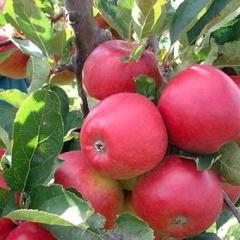Examples of oxymifiers from fiction
Allowing to create an unexpected and bright effect in fiction or journalism. This refers to the oxymoron. Definition and examples of this interesting phenomenon, where and how it is used in different languages \u200b\u200b- all this you will learn later.
Definition
Oxymoron (Other writing "Oxymoron") comes from ancient Greek phrase, which can be translated into Russian as "witty nonsense." This name is already in itself an oxymoron. It can be assumed that it was just that an example that gave the name to the whole phenomenon.
Probably, the first oxymifers were the consequence of inattention or bad knowledge of the language and, accordingly, were stylistic errors. But then this phenomenon was picked up by writers and quickly turned into an artistic reception. Its essence is to combine the incompatible concepts, actions or signs together. This is done with the aim of attracting attention, emphasize those or other qualities of the depicted, create an effect of surprises, etc. It is often necessary for the purpose of creating a comic or satirical atmosphere, an oxymoron is used. Examples of fiction, eloquently prove, as far as the expressive potential of this stylistic reception.
Proper stress in the word
Before continuing the study of this phenomenon, it is necessary to clarify an important point. If you use this term in oral speech, then how to put an emphasis in the word?
Unfortunately, most of our compatriots do not know this and therefore make a speech mistake. In the word "oxymoron", the emphasis falls on the second syllable, that is, the letter "Yu". That is how it should be pronounced in Russian, regardless of the number and case.
It is noteworthy that in English and German languages \u200b\u200bthe word oxymoron has double stress. On the peculiarities of the use of oxymorons in the literature of different peoples, it will be further in the article.
Application as an expressive
If you carefully read in a variety of examples, the oxymmer appears as an expression of an internal contradiction, which the author does not try to hide, but, on the contrary, emphasizes. For example, take the rows from the poem "Tsarskoselskaya Statue", written by A. Akhmatova:
Look, she has fun to be sad,
So elegantly nude.
Here you can not even notice alone, but two examples of the artistic reception under consideration: "fun to be sad" and "elegantly naked." The purpose of the author is an attempt to look into the depths of things and see them from an unusual side.

This stylistic reception can be seen in the work of a huge number of authors - both poets and prosaikov. For this reason, it is impossible to allocate literary genres or styles in which the oxymoron is most often used.
Examples of fiction
Russian literature is replete with such combinations of words. Especially spectacular they look in the names of works, for example:
- "Optimistic tragedy" (V. Vishnevsky);
- "Hot Snow" (Y. Bondarev);
- "Wave running" (A. Green);
- "Living corpse" (L. Tolstoy);
- "Dead Souls" (N. Gogol);
- "Tomorrow was war" (B. Vasilyev);
- "End of Eternity" (A. Azimov).

No less popular oxumor and prosaic works. As an illustration, we give a quote from the famous novel J. Orwell "1984": "War is a world. Freedom is slavery. Ignorance is power. " Here, each part of the slogan of the antiutopic state is a combination of incompatible things, which allows the writer to reveal his idea to the most accurate and memorable way. Also, the famous Latin saying may be an example of this artistic reception: "Want to peace - get ready for war."
In all the above literary quotations, the similarity can be traced, namely the author's intention to combine opposite concepts. This is an oxymoron.
Examples in Russian
Usually we do not even think when I hear or say the phrases that are typical oxymologians. "Gilt cold", "Living Dead", "Honest Thief", "Silent Creek", "Ring Silence", "Ordinary Miracle", "Smart Stupidity", "Speaking Silence", "Cold Fire", "New Tradition" - All these are typical examples. The oxymoron can make thinking, open up new verge of a phenomenon, laugh.

If you write the text and want to use this stylistic reception in it, then be careful. Oxymorons should not be too much, otherwise they will lose their artistic value and will look like speech errors. Using incompatible concepts in oral speech, it is also not necessary to get involved: make sure that the listeners have perceived your thought correctly.
In foreign languages
Oxymoron in English is not less popular. Examples of this phenomenon can be found in poetry, and in prose. The quote from J. Orwell quotation already appeared in this article - only a drop in the sea. As other illustrations, the following can be brought:
IT WAS AN OPEN SECRET. - "It was not a secret" (literally: "It was a famous secret").
Lightless Light - "Dark Light".
Good Bad Boys - "Good Bad".
A Young Middle-Aged Woman - "Middle Age".
Love-Hate - "hateful love" b.
Bloody good - "damn good."
Peace Force - "Peaceful Power".
Alone ToGether - "loneliness together" (literally "single together").
Only Choice is the "only choice."

As well as in Russian, the oxymifers are widely used in English-speaking titles. Consider, for example, to the well-known names of Hollywood films: Back to Future - "Back to the Future", True Lies - "Truthful Lie" and the like.
Oxymoron can be found in German (Angstgeruch - "Smell of Fear", Der Fremde Freund - "Alien Friend") and in many others. Such a bright means of artistic expressiveness is used in the speech of many nations.
Oxymoron in everyday life
Surprisingly, as we often pronounce phrases containing oxymifiers, but do not even guess about it. Here are some examples, the oxymoron in which almost no one notices:
- "big half";
- "scary beautiful";
- "Drink for health";
- "a virtual reality";
- "Family Life", etc.
All these expressions were so firmly included in everyday use that we do not even think about how contradictory them in their meaning. The study of oxymoronuses can push to see another look at the usual words, expressions and the language as a whole.
Instead of pre-school
However, it is worth noting that not all combinations of opposing words can illustrate the phenomenon described in this article as its examples described in this article. The oxymoron is primarily an intentional connection of contradictory images. For this reason, sustainable expressions ("white crow", "bottomless barrel") and stylistic combinations ("sweet tears", "poisonous honey") researchers refer to phenomenon called the catarca, not an oxymoron. However, the similarities meanwhile and other stylistic techniques are quite strong.

In addition, the oxymoron is compared with a paradox with many researchers. Indeed, there is a lot of common between these phenomena.
Paradox, Oxymoron, Katus - These phenomena can be used as artistic techniques and demonstrate new, unusual, original sides of our reality.


